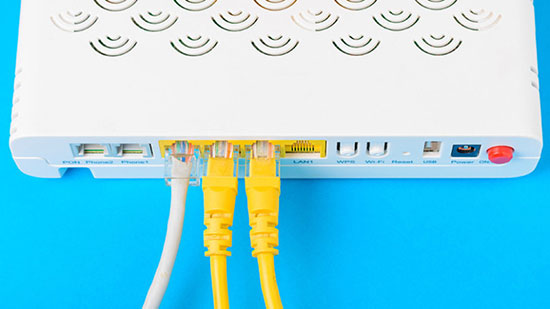How to Monitor Data Usage, so You Don’t Get Overcharged
The most painful thing as an internet user is to get charged for data you have not utilized. And many people find themselves in this predicament whereby you choose a data plan that hast too much data, and you end up overpaying what you have not used. On the other hand, you pick a plan with little data you overuse and get charged for exceeding the set limit. Both scenarios can be avoided by understanding your data demands and your monthly usage.
Look for an ISP that provides a plan that resonates with your internet needs. You can test first by looking for a service provider with no upfront cost broadband to determine your usage. It helps you to only pay for what you’ve used.

How to figure out how much internet you use
Some activities consume more data in your data usage than others. The problem comes where you are not aware of the percentage of usage per activity. For instance, one minute of browsing online can consume approximately 250 kilobytes (KB) internet data or 15 MB (Megabytes) within one hour.
If you want to identify exactly how much internet you use, service providers offer tools such as calculators and charts to identify your data usage. On the other hand, you’ll find other service providers with an internet cap of 1 Terabyte (TB). Alternatively, if you exceed the set data cap, they give you the option to choose an unlimited plan to pay monthly. Luckily, you may find internet service providers with no data caps at all; unfortunately, they are not many, and you need to search widely to get services you are happy with.
What makes you Exceed your Data Limit?
If the highest percentage of your data usage goes to emails, text, and normal web browsing, you are on the safe side. But if you are a heavy user and you spend most of your time on YouTube watching videos, and have features like auto-play for social media videos automatically means you are overspending your data. Watching videos and engaging in many uploads and downloads means you may exceed the set limit or your monthly usage.
Another culprit that may cause you to exceed data usage is spending most of your time on a platform such as Facebook, Instagram, and others can consume lots of data. You may ignore the idea thinking just scrolling through videos, photos, making calls, and downloading as a small issue. But wait until you see the real details about your usage will you realize how these platforms make you consume lots of data.
The elephant in the room that may eat up most of your data is streaming videos. Today, many people are into cord-cutting and advanced 4K displays. If you are concerned about your data usage, you can shift your 4K streaming to 1080p displays and still enjoy the same content without consuming more data.
A study showing consumer behavior in data usage examines a Netflix user’s life. It shows a video of one and half hours or 90 minutes consumes around 1.6 GB of data within one hour, equivalent to (2.4 GB for a 90-minute movie/ video). So, when you take that data and make an estimate of one month, you will realize this user can stream a maximum of 416 Netflix videos of 90 minutes to reach the set 1 terabyte data cap. It’s even worse if you have more people in your household sharing the same data, which means they help you reach the limit of 1 TB fast.
The most notorious data that you may not realize or account for its usage is background activities. Your device may automatically perform a task, unaware while you think it’s the basic activities you are doing that are exploding your data usage. These are the areas you need to check and avoid new updates or refreshes you have not initiated.
Ensure you patiently log on to a Wi-Fi account before an update or refreshes occurs. The other action to take is to go to your phone settings and put all the apps to manual refresh. These are simple steps that can save you loads of data from wastage unaware.
There are emerging routers that provide network management settings and allow you to monitor your data usage on every device.
Here are Ways you can lower your Internet Bill
If you monitor your data usage and still realize the amount you are spending is still the same, here are ways to keep the monthly bill minimal.
Reduce internet speed
Many people upgrade their internet data plan to get more speed but do not use it. If you are not using the data you are paying for due to the little time you spend at work or home, try to figure out the amount you spend per month.
For instance, if you pay $70 per month for a 940 Mbps plan but only spend very little time at home when watching your favorite program, you need to reconsider. You could probably do well with 100 Mbps, or 50 Mbps download speeds. When you figure out your data usage and the speed you need monthly, search for an ISP that provides your range’s data plans and pay for it.
Purchase your Modem & Router

Some internet service providers will require you to rent their modem and router at a monthly fee. But if you plan to use the equipment’s for several years, the fee will exceed the amount you’d have used to purchase your own equipment’s.
The benefit of purchasing your modem and router is you have control of their usage. Also, you can switch to another user without buying other equipment’s.
Conclusion
Every coin counts and no one wants to spend money on services they rarely use. Monitoring your data usage helps you determine whether the ISP overcharges you for services not used or to identify devices consuming your data without your knowledge.
